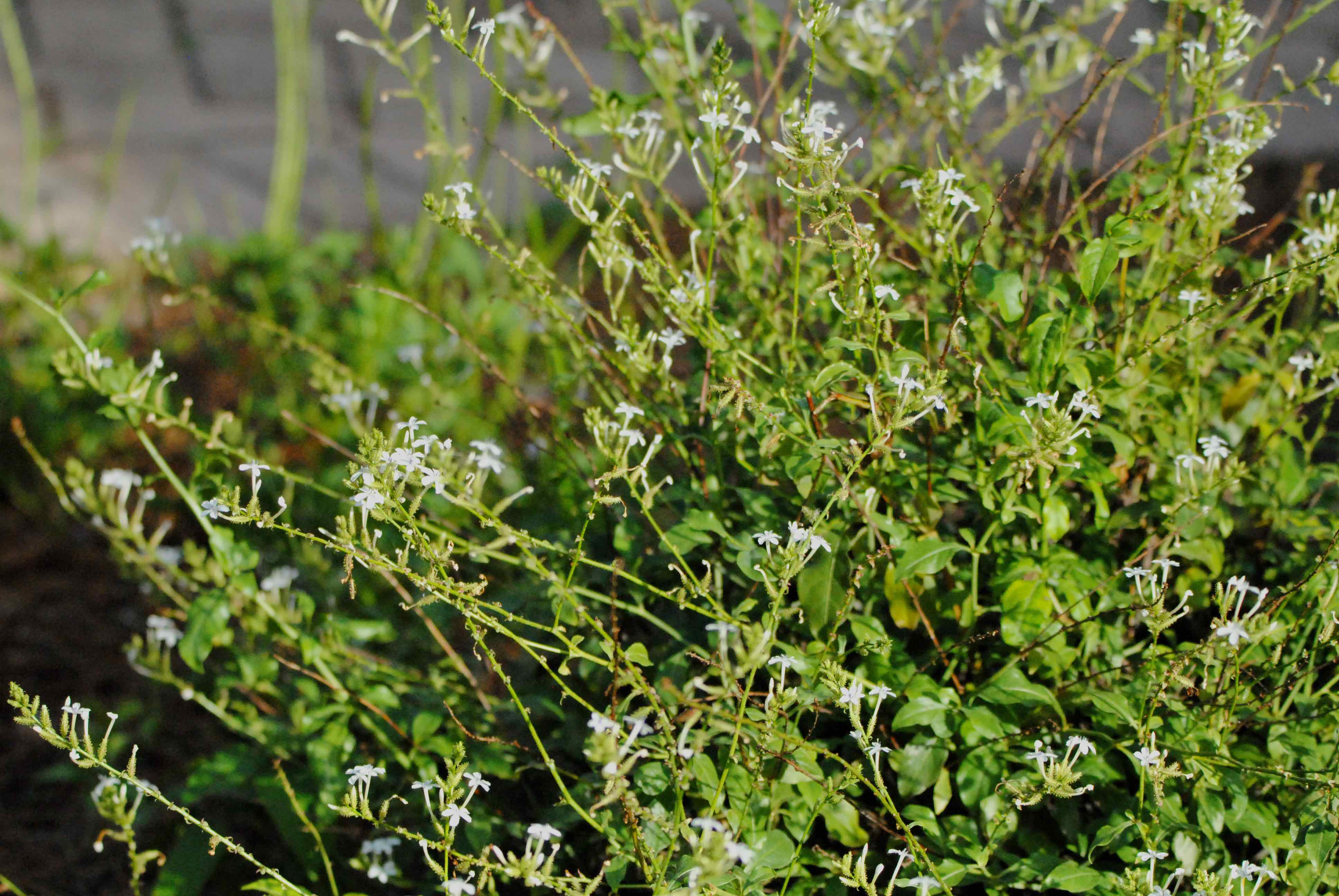
Wild plumbago, photographed at Loxahatchee National Wildlife Refuge, Boynton Beach, Palm Beach County, in March 2016.
There are some similarities between wild plumbago, Plumbago scandens, and the seemingly ubiquitous cultivated cousin that we see in landscapes every day. They are cousins after all, members of the same genus.
But our guy here is a Florida native and much less flashy than the other plumbago, Plumbago auriculata, which is an import from South Africa. Wild plumbago is much smaller than its cultivated cousin, with a demure floral display. But wild plumbago occupies an important place in the natural order of things and perhaps an important place in our medicine cabinet as well.
Wild plumbago's native range extends beyond Florida's border into parts of south Texas and Arizona. Within Florida's borders, it's found throughout most of the coastal parts of the state from Volusia County south. It's also found in the Caribbean, Mexico, Central America, South America, Africa, southern Europe, Asia and the Pacific islands, including Hawaii. It grows in the understory of palm groves, thickets and hammocks.
It's a small plant, described by some as a vine, by others as a shrub. It will grow perhaps three or four feet long and just as wide. Leaves are arranged alternately, and are eliptical in shape. It produces a small white flower with perhaps a hint of blue, singly along the stem instead of showy clusters like its cousin. They bloom year long, giving way to a seed pod that forms just below the neck of each flower. Those pods are covered with small "hooks" that will attach themselves to nearly any surface, including fur and feathers. They're also the secret behind the plant's global distribution. It's drought tolerant; in fact it's recommended as a landscape plant in Arizona because of that. The cassius blue butterfly uses our guy as host and nectar plant.
In traditional Hawaiian medicine, a poultice is made using the bark, leaves and roots and applied to body parts that are swollen. It's used to make a paste, which is applied to sores. A lab study done in 2004 found that the wild plumbago might have promise as a treatment for Parkinson's Disease. A second study released recently found that wild plumbago has cytotoxic properties — able to kill cells, in plain English — and demonstrated the ability in the lab to kill melonoma cells and the MCF-7 line of breast cancer cells. It's also shown promise against non-small cell lung cancer. On the other hand, a farmer in northeastern Brazil found his goats had been poisoned after eating wild plumbago. A subsequent study feeding goats controlled amounts of wild plumbago confirmed that in large quantities it is deadly. The unfortunate test animals endured an ghastly death.
A taxonomic footnote. There are two scientific names floating about for wild plumbago, the one we've used, P. scandens, and P. zeylonica. At one time, there were two recognized species of plumbago, scandens, the New World variety (meaning western hemisphere) and zeylonica, the old world (meaning everywhere else). The two are now generally recognized as one species but the names have stuck around and are seemingly used interchangeably.
Wild plumbago is also known as doctorbush, wild leadwort, Ceylon leadwort, Florida plumbago, Mexican plumbago, white desert plumbago, white plumbago, summer snow, scandens, blister bush, bright eyes, Dr. John and eye bright. It is a member of Plumbaginaceae, the plumbago family.
Click on photo for larger image
Links for Wild Plumbago



